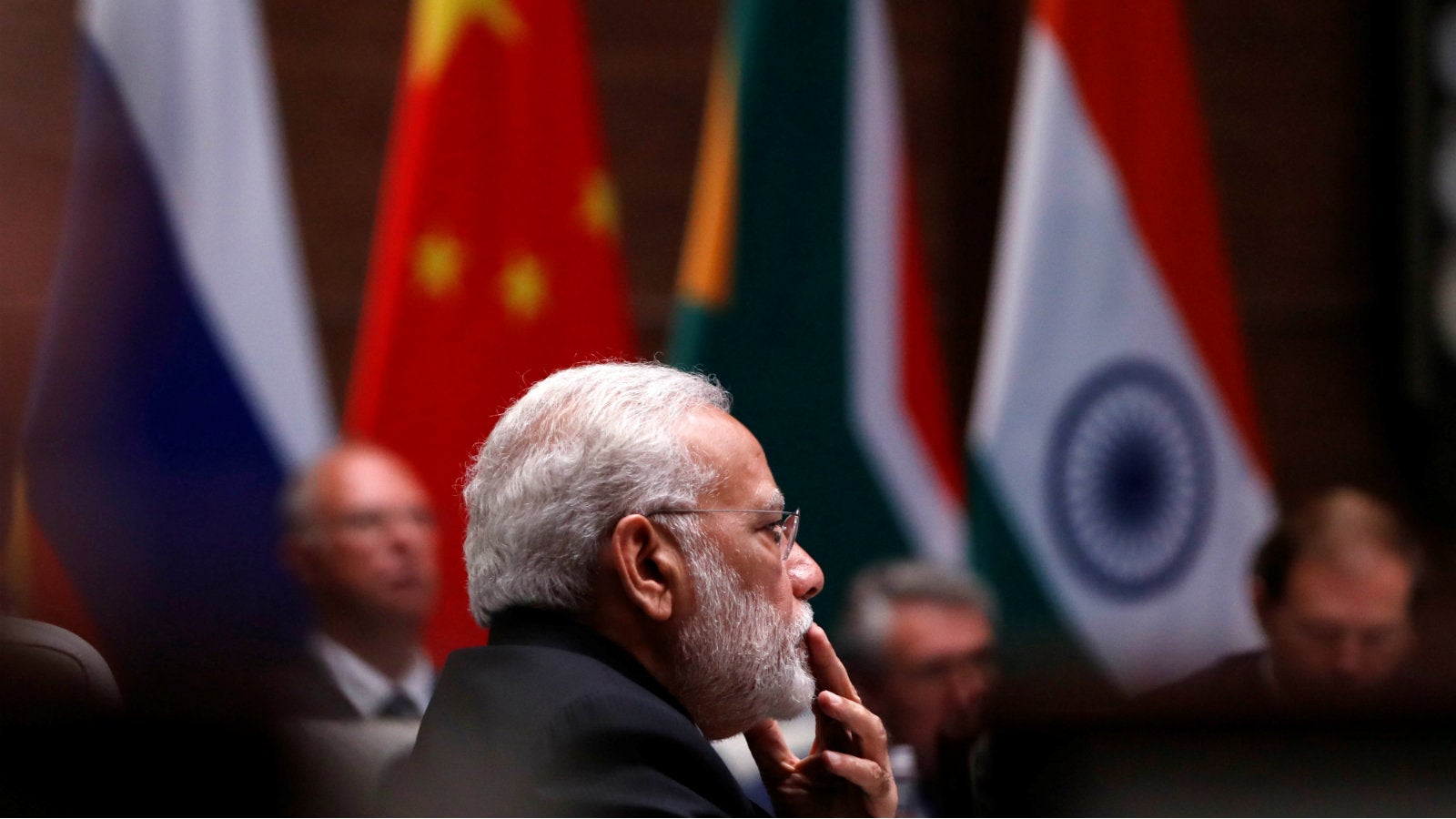Blindly mimicking China’s growth model may simply not be possible for latecomer India
If we examine India’s current development strategy, including the Make in India initiative, it is implicitly oriented towards replicating the Chinese growth story.


If we examine India’s current development strategy, including the Make in India initiative, it is implicitly oriented towards replicating the Chinese growth story.
China’s spectacular growth record is seen as a validation of the investment- and export-led model successfully pursued earlier by some of the east Asian economies, with a focus on low-cost labour-intensive manufacturing. This strategy has also been based on benign assumptions regarding energy and resource availability, which may not remain valid as the global economy undergoes a major restructuring after the global financial and economic crisis of 2007–08.
China’s emergence as a low-cost manufacturing hub and leading merchandise exporter was enabled by a relatively extended period of unusually favourable international economic factors. The major consuming markets of the US, the EU and Japan were relatively open and expanding. Global trade grew at an average rate of 6% per annum, double the rate of world GDP. Further, more than 50% of Chinese export goods were generated by wholly-owned subsidiaries of multinationals or joint ventures between Chinese and foreign partners.
More recently, China has become increasingly integrated into the global supply chains of multinational conglomerates like Apple and Microsoft. The supply chains consist of production facilities spread across a number of countries, each manufacturing only some components, which are assembled together at a final location into finished products.
India’s participation in these supply chains is weak. In the early phase, foreign companies invested in China to use it as a low-cost processing platform for products to be sold in Western markets rather than in the domestic Chinese market.
Since China joined the WTO in 2001, its share of exports to the combined markets of the US, the EU, and Japan has risen to 18%. This extremely supportive international economic environment that helped China’s economic rise, and which India to some extent also leveraged in the 1991-2008 period, no longer exists. It is unlikely to revive even when the global economy fully recovers from the consequences of the financial crisis.
There are longer-term forces at play, which may transform global economic and trade architecture in such a way that India’s investment- and export-led strategy may not deliver the expected outcomes. Despite the economic slowdown, the US, the EU, and Japan continue to be the most significant markets globally. But global trade, which has been growing faster than the global GDP, has now declined to equal global GDP growth rates, plunging even lower the last two years. And even though China is the world’s second-largest economy, it accounts for only 2% of global imports.
All this has left a global market that India finds less welcoming than in the past.
The recent stagnation in its exports bears this out. It has been argued that for accelerated growth India must seek to become part of global supply chains. But the major global and regional supply chains in Asia, centred on China, are already deeply entrenched and hard to penetrate, particularly since we still have problems on the infrastructure, delivery and quality fronts. In addition, technological changes such as 3-D printing are creating an incipient trend towards the relocalisation of manufacture. Advances in robotics may also do away with the need for low-skilled, repetitive labour in industry. China achieved a spectacular rise in its exports, from $17 billion in 1980 to $1.7 trillion in 2010. This was aided by a significant inflow of capital from Greater China (Taiwan, Singapore and Hong Kong), Japan, and the West.
The investments that poured into China were part of the global trend towards higher capital flows, both from and among the major economies. For example, in the US, foreign direct investment (FDI) grew from $19 billion in 1980 to $338 billion in 2013. For Japan, the comparable figures are $2.3 billion and $135.7 billion. In the EU, investments rose from $21 billion in 1980 to a staggering $809 billion in 2000 before plunging to $250 billion in 2013. We are unlikely to see such massive flows of capital in the near future.
We are also beginning to witness a rise in protectionist trends, which portends the fragmentation of the global economy. India can welcome the Trump administration’s decision to withdraw from the proposed new mega trade and investment blocs like the TPP in the Asia-Pacific and the TTIP covering North America and Europe.
From the Indian perspective these blocs are simply large trading and investment arrangements spanning the globe and excluding India. They would have made entering the world’s largest markets more difficult for India particularly since they threatened to put in place a whole series of non-tariff barriers in the shape of new and more rigorous norms, standards and regulatory procedures. India would have been unable to conform to them. While the move gives India some breathing space, protectionist threats are cropping up across the world. The emphasis is now on nation-to-nation trade deals rather than regional arrangements. With global trade stagnant and markets shrinking, India will have to find additional drivers for growth rather than rely on just an export- and investment-led strategy. Linked to this market-limiting trend is the growing resource crunch.
Excerpted with permission from Shyam Saran’s book How India Sees the World published by Juggernaut Books. We welcome your comments at [email protected].